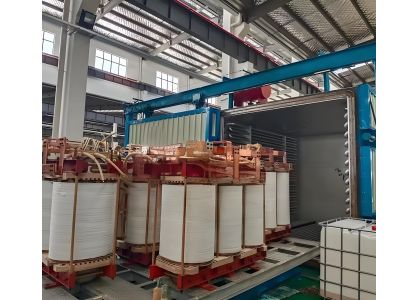
When examining transformers — the backbone of power distribution — it becomes clear that beyond metal coils and wires, protective insulation is critical. A closer look reveals that filament tape and fiberglass tape play vital roles in safeguarding transformers against electrical faults, environmental hazards, and mechanical stress.
This guide explores the multiple reasons why transformers are wrapped with different types of insulation tapes, such as fiberglass tape for electrical insulation, high temp fiberglass insulation tape, and fiber insulation tape, highlighting their applications and importance.
The primary reason transformers are wrapped is to provide effective electrical insulation. Fiberglass tape for electrical insulation prevents unintended contact between conductive parts, reducing the risk of short circuits and electrical arcs.
High-dielectric strength tapes like fibreglass insulation tape can withstand voltages up to 5kV or higher, offering robust protection to internal transformer components and significantly extending equipment lifespan.
Transformers often face harsh outdoor conditions such as rain, dust, UV exposure, and extreme temperatures. Here, fiber insulation tape creates a barrier against moisture and contaminants.
Especially in high-temperature regions, using high temp fiberglass insulation tape is crucial to maintain insulation performance, ensuring the transformer remains reliable even under severe environmental stress.
Besides electrical protection, filament tape and fiberglass tape enhance mechanical strength. Vibrations, thermal expansion, and operational shocks could loosen or misalign components over time.
The tensile strength provided by filament tape and the resilience of fiber insulation tape stabilize the internal assembly, safeguarding transformers during transportation and continuous operation.
Meeting electrical safety codes often requires specialized insulation techniques. Fiberglass tape for electrical insulation meets stringent industry standards such as UL 510, ensuring certified performance under real-world conditions.
Wrapping transformers with high-quality tapes like fibreglass insulation tape helps utilities and manufacturers comply with regulations while also improving the reliability of power networks.
Color-coded fiber insulation tapes are sometimes used for marking different transformer parts. For example:
Red for high-voltage circuits
Yellow for ground points
Blue for control wiring
This system simplifies maintenance and troubleshooting by providing clear visual guides, reducing operational downtime.
While fiberglass tape is highly versatile, other types of tapes also contribute to transformer reliability:
Filament Tape: High tensile strength, ideal for mechanical binding and support.
FiberGlass Tape: Superior insulation and heat resistance.
High Temp Fiberglass Insulation Tape: Specifically designed for high-temperature environments exceeding 200°C.
Cotton Tapes: Suitable for low-temperature, flexible applications.
Oil-Resistant Tapes: Essential for transformers exposed to oil-filled environments.
| Feature | Filament Tape | Fiberglass Tape | High Temp Fiberglass Insulation Tape |
|---|---|---|---|
| Tensile Strength | Very High | High | High |
| Max Temp Resistance | 120°C | 150°C | 260°C |
| Electrical Insulation | Moderate | Excellent | Excellent |
| Main Use | Mechanical reinforcement | Electrical insulation | High-heat insulation |
Q1: Why choose fiberglass tape over filament tape for electrical insulation?
Fiberglass tape offers better dielectric properties, making it ideal for electrical insulation, while filament tape is better for mechanical reinforcement.
Q2: When is high temp fiberglass insulation tape necessary?
When transformers operate near heat sources or in ambient temperatures above 150°C.
Q3: Can fiber insulation tape be used in place of filament tape?
Fiber insulation tape can supplement filament tape for added insulation, but for structural binding, filament tape remains superior.
Wrapping transformers with filament tape, fiber insulation tape, and fiberglass tape for electrical insulation is essential for maintaining operational integrity, safety, and longevity. Especially in high-demand environments, the choice of high temp fiberglass insulation tape or fibreglass insulation tape can significantly impact performance.
Understanding the specific strengths of each material allows engineers and technicians to select optimal solutions, ensuring reliable power transmission and minimizing maintenance costs.
Explore our full range of insulation tapes tailored for transformer applications and enhance your electrical systems' durability and efficiency.